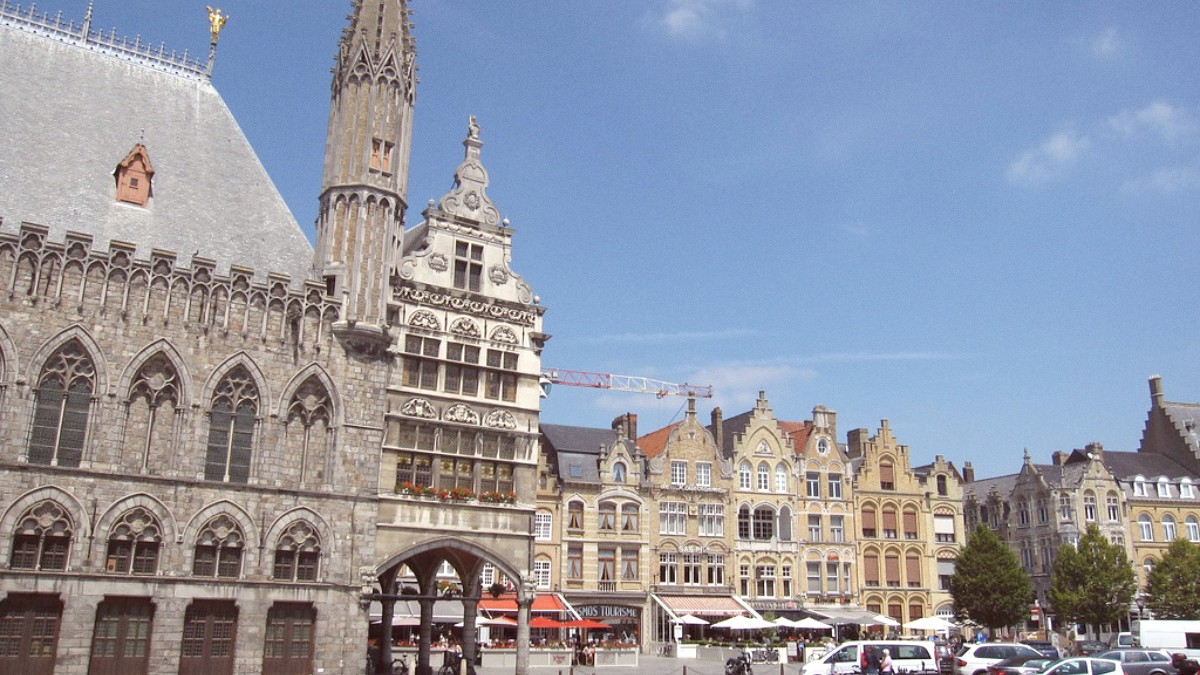
Flanders, Belgium
In Ypres, the main public transportation system is the bus system, operated by De Lijn. Ypres does not have metro or tram systems.
The main hub for buses in Ypres is the Ypres (Ieper) train station and the nearby Grote Markt. Bus routes connect the city center with surrounding towns, villages, and some WWI battlefield sites, like Route 95 to Tyne Cot Cemetery and Passchendaele.
Taxis offer a direct, convenient travel method. Licensed taxis typically appear beige or black, display a roof sign, and have a visible meter. Fares are metered and regulated. Payment in cash is always accepted. Many taxis also accept credit or debit cards. Uber's presence in Ypres is limited.
A rental car provides freedom and flexibility for exploring Ypres and the wider Westhoek region. Drivers must be at least 21 years old (some companies 23/25). A valid national driving license is necessary, along with an International Driving Permit if your license is not from an EU/EEA country. A major credit card in the driver's name is necessary for the deposit. Pre-booking online comes recommended for better rates. Explore options at DiscoverCars.com.
Bicycles are widely available for rent in Ypres, given the flat terrain and the popularity of cycling for exploring WWI sites. Many hotels, B&Bs, and dedicated rental shops, like Rent-a-Bike Ypres, offer rentals. Costs are typically €10-€20 per day. Helmets are often available for rent.
The area around the Grote Markt, the Cloth Hall, and the Menin Gate is highly pedestrian-friendly, with many streets and squares designed for walking.
The preserved medieval ramparts surrounding the city offer a pleasant walking path with green spaces and views.
Flanders boasts an excellent network of dedicated cycling paths (fietspaden), especially in rural areas. Ypres is suitable for cycling.
Cyclists are prevalent; drivers are generally aware. Numerous themed cycling routes explore WWI battlefields. No specific "no-go" areas exist for pedestrians or cyclists.
Rental options provide freedom and flexibility for exploring Ypres and the wider Westhoek region. Bicycles are especially popular given the flat terrain.
Choosing your accommodation with its proximity to transportation hubs or attractions makes travel easier. Hotels near the Grote Markt or train station offer central access.
Consider hotels near major bus stops for easy city and battlefield access. If planning day trips, select a base close to Ypres train station.
Many accommodations offer bike storage or rental services. If driving, inquire about private parking at your accommodation to avoid city parking difficulties.
Walking and cycling offer intimate ways to experience Ypres and its surrounding historical landscape. Both provide opportunities for quiet reflection and active exploration.
A backpack or compact luggage makes mobility easy. Consider packing cubes for organization.
Easier Mobility
Download maps for offline use, especially in areas with limited signal. This is useful for walking or cycling routes without data access and conserves battery life.
Always Connected
The Tourist Information office provides updated transport schedules and maps. Local advice from your accommodation can offer route suggestions. Look for signs in Dutch and English.
Expert Guidance
Choosing the right transport for each activity in Ypres optimizes your visit, whether it is walking the historic streets or cycling the battlefields.
Balance convenience, cost, and personal preference for a fulfilling experience.